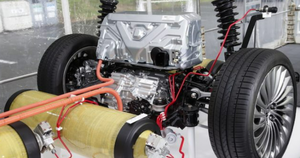Overcoming Challenges: The Future of Hydrogen SUVs
Body
1. Infrastructure Development:
One of the major hurdles in the widespread adoption of hydrogen SUVs is the limited availability of refueling infrastructure. Unlike conventional gasoline stations or electric charging networks, hydrogen refueling stations are relatively scarce, making it challenging for hydrogen SUV owners to find convenient refueling options.
To address this challenge, governments and private companies need to collaborate to accelerate the development of hydrogen reffueling infrastructure. Investment in building a comprehensive network of refueling stations is crucial to provide hydrogen SUV owners with convenient access to fuel. Countries such as Japan and Germany have already made significant progress in this area, serving as models for others to follow.
Furthermore, strategic placement of refueling stations along major highways and urban centers can alleviate range anxiety and encourage more consumers to consider hydrogen SUVs as a viable option. Public-private partnerships can play a pivotal role in incentivizing the establishment of refueling infrastructure by providing financial support and regulatory frameworks.
2. Cost Reduction:
The cost of hydrogen SUVs remains a significant barrier to widespread adoption. Currently, the production and manufacturing processes involved in hydrogen fuel cell technology are expensive. The high cost of fuel cell systems and hydrogen storage tanks reflects in the purchase price of hydrogen SUVs, making them less accessible to the general public.
However, ongoing research and development efforts are focused on reducing production costs and improving the efficiency of fuel cell systems. Advancements in materials, manufacturing techniques, and economies of scale are expected to drive down the cost of hydrogen SUVs over time. As the technology matures and gains wider acceptance, prices are anticipated to become more competitive, making hydrogen SUVs a viable option for a broader range of consumers.
3. Awareness and Perception:
Another challenge for hydrogen SUVs is the general lack of awareness and misconceptions surrounding the technology. Many consumers still have limited knowledge about hydrogen fuel cell vehicles and may hold reservations due to concerns about safety, availability, and performance.
Addressing this challenge requires a concerted effort to raise awareness and educate the public about the benefits and viability of hydrogen SUVs. Promoting the environmental advantages, longer driving ranges, and fast refueling times can help dispel misconceptions and build confidence in the technology.
Public demonstrations, test drive events, and collaborations with influencers and environmental organizations can play a crucial role in showcasing the potential of hydrogen SUVs and changing public perception.
Conclusion:
Despite the challenges, the future of hydrogen SUVs looks promising. Infrastructure development, cost reduction, and awareness campaigns are key areas that require attention to drive the widespread adoption of hydrogen SUVs.
By investing in the expansion of refueling infrastructure, driving down production costs, and educating the public about the benefits and viability of hydrogen SUVs, we can overcome the hurdles and pave the way for a sustainable transportation future.
Hydrogen SUV offer a compelling solution for zero-emission transportation with long driving ranges and quick refueling times. With continued technological advancements and collective efforts from governments, industry stakeholders, and consumers, hydrogen SUVs have the potential to become a prominent player in the automotive industry, contributing to a cleaner and greener future for generations to come.










Comments